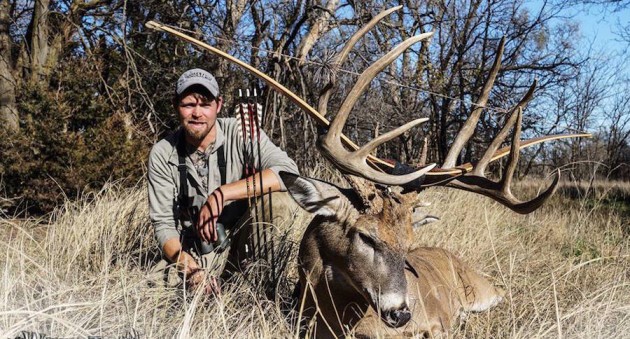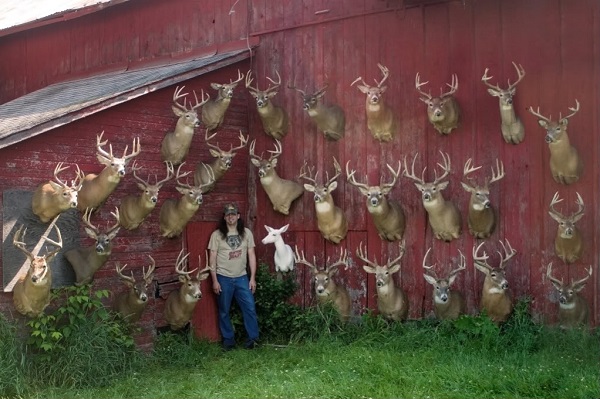When I was in grade school, I remember asking Mr. Lewakoski, my math teacher, how hard it was to be a millionaire. His loud hard laugh echoed off the concrete walls of the classroom. “You should probably ask a millionaire,” he said. “But the chances are you will earn a million throughout the course of your life, the question is; what will you do with it when you get it?” While I am not a millionaire and likely either is Mr. Lewakowski, his advice rings true for finding and hunting mature bucks as well. It is likely that you will stumble across a mature buck in the course of your life, but the question is: what are you going to do with it when you find it? More importantly why not find out what successful hunters say about the way they find and hunt mature whitetails?
One thing I have learned about the hunting industry is that there is no lack of advice. Everyone has their own method, their own land, their own sponsors to promote, and their own platform to say it from. As an average Joe hunter, how do we sort out all the information and decipher what would truly work for us? Through reading books and magazine articles, listening to interviews and watching instructional videos, I have found three successful, public land hunters with three distinctly different approaches. While their philosophies are different, public land is the ultimate equalizer, and there is an underlining pattern that helps them find and hunt mature whitetails.
The Hunters

Jared Scheffler- Owner of Whitetail Adrenaline, a non-sponsored DVD series that follows a group of friends across the country in pursuit of mature whitetails. A Wisconsin native, Scheffler’s name to fame is the 197 7/8” Kansas public land monster he killed in 2015. That deer, the largest typical ever filmed on public ground, landed him on the front of North American Whitetail magazine. Scheffler hunts exclusively from the ground with a long bow, adding an incredible element of difficulty.

Dan Infalt- Owner and operator of The Hunting Beast, an information based forum for all serious bow hunters. Infalt is as blue collar as you can get, and has a series of instructional videos that focuses on how to scout, find and hunt mature whitetails. The Wisconsin native has arrowed over 30 Pope and Young bucks, primarily on public land.

John Eberhart- Author of “Bowhunting Pressured Whitetails,” “Precision Bowhunting,” and “Bowhunting Whitetails the Eberhart Way.” Eberhart resides in Michigan, where he has tallied 27 bucks listed in the state’s record books. Those 27 deer, had come from 19 different properties across 10 different counties. Aside from his success in Michigan, he has taken 18 Pope and Young bucks on 19 out of state trips.
How They Scout and Find Mature Bucks
Jared Scheffler- Simply put; he doesn’t. Scheffler admits that he does very little if any scouting before the season. His entire plan is to acquire the most recent information (MRI), and that can not be done months, weeks or even days ahead of time. He simply hunts the property that has the best action that day, and the next day finds another property that is “hot.”
John Eberhart- John takes a rather methodical approach to finding mature whitetails. The day after the hunting season ends, you will likely find him scouring the woods for any sign of rubs, scrapes, beds and isolated food sources. Isolated food sources, such as a single apple tree or a cluster of white oaks along a creek bed, that are adjacent to doe bedding areas are his bread and butter.
Dan Infalt- Dan has forged his reputation on hunting specific buck beds in cattail marshes. He begins his hunting scouting by checking out aerial maps like Google Earth or Hillmap, where he can get a visual on deer trails to and from isolated pieces of high ground within a marsh. He uses the post season to confirm what he has seen on aerials by visiting each bed, and literally sits in them. This gives him first hand knowledge of what a deer in each bed can and can not see, as well as understanding how he lays to detect wind and movement.
Hunting Styles
Jared Scheffler- His show up and hunt style is one of the most exciting hunting to watch, and likely the most exciting to do as well. He uses a spot and stalk method, equipped with a long bow, that gives him the versatility to take quick snap shots rather than going through a full draw cycle that is required with modern compound bows. When he arrives at a new location, he filters through the timber at a relatively quick pace, eliminating huntable ground as quickly as he can. When he arrives at an area that he feels is “the right stuff” he slows to a snail like pace and works the piece methodically.
The “right stuff” to Scheffler could mean many different things; thick cover, high traffic deer runs, or bumping bedded does. To him it is more of a feeling he acquires from experience. When he spots a mature deer, he uses the terrain and wind to carefully make an approach. Often that approach can take him miles to loop back from the down wind side of a bedded buck.
The art of sneaking and looking, or as he likes to call it “snooking,” is a learned trade that comes with hours and hours of boots on the ground, but there is no denying his success, as he has shot multiple mature deer within 10 yards.
Dan Infalt- His style is more of a run and gun set-up. He uses a lightweight tree stand that he carries in on his back each time he hits the woods. As previously mentioned he hunts specific buck beds along cattail marshes. Each time, Infalt sets up on a different bed, slowly eliminating them one by one until he finds the one that is holding a mature buck. A large marsh could hold as many as 20 different beds, and Infalt is willing to hunt 19 times without seeing a deer to find the one that is being used.
He predominately hunts evenings knowing that a mature buck is willing to stay bedded until the last few moments of light. He pushes the envelope by sometimes setting up as close as 50 yards from a bedded buck. This is when his preseason scouting comes into play, he is able to know exactly what the buck is able to see from his vantage point, and how to get into a tree without being detected.
John Eberhart- Eberhart prepares 50-100 tree locations every year during preseason scouting, but uses only about half of them during the season. Using his trade mark style of hunting with a tree sling, he is able to easily able to slip into any one of his prepared trees. He uses the tree sling for its lightweight feature (about 2lbs) and its versatility in the tree, being able to swing from one side of the tree to the other.
He hunts primarily during the rut in late October and early November, focusing on high traffic isolated food sources, and scrape lines. Using the movement of does to focus on the travel corridors and pinch points, he ambushes bucks scent checking for receptive does.
Scent Control
Jared Scheffler- If you haven’t figured it out by now, Scheffler doesn’t do anything according to industry standards. Most of the time he doesn’t wear camo, so of course he doesn’t take the time to go through a scent control regiment. What he does focus on though is “hedging the wind.” When stalking a deer, especially a bedded one, he approaches from the deer’s back side, which is typically up wind. He is careful to approach from a slight angle, making sure his scent is blowing just off from the deer’s nose. This keeps the scent from the deer, while tricking him that he is secure behind him.
Dan Infalt- From the help of milk weed, Infalt has taught himself to be somewhat of an expert in thermals. An abbreviated version of wind thermals is that air current, even with a direct wind, doesn’t move in a direct line. Different columns of air pressure, terrain, weather conditions, as well as water, all have a significant impact on the trajectory your scent is being carried. One could spend a lifetime understanding it, while Infalt has spent his hunting career mastering it.
John Eberhart- He doesn’t care about wind. He isn’t bothered by understanding thermals. His entire scent control method is based on his belief of activated carbon technology. From washing every article of clothing and gear in scent eliminating detergent, to draping himself head to toe, in his activated carbon gear, he feels he can beat a deer’s nose. According to Eberhart, most people, including TV personalities use their gear wrong. “If you don’t have your face covered with a drop down mask, and you wear a baseball cap, it does you no good.”
Bottom Line
Scheffler, Infalt and Eberhart have become masters of finding and hunting mature whitetails on public land. Each with their own style, their own preferences, and their own experiences to draw from, it is interesting however, to see common lines between the three. They stay mobile, never hunting the same spot twice. They focus a a great deal of their time and effort to keeping their scent off the nose of a mature buck, and they use their understanding of deer behavior to capitalize.
The most important aspect to take away from these three successful hunters is to know and understand the basics of deer; their strengths and weaknesses. Understand your own strengths and weaknesses, and find a way to beat the odds by playing both to your advantage.
Greatest Whitetail Fight
